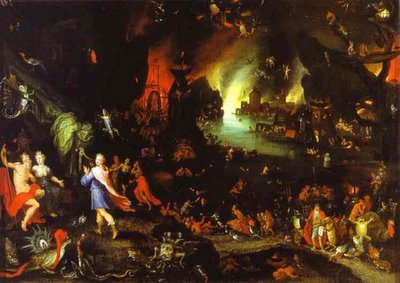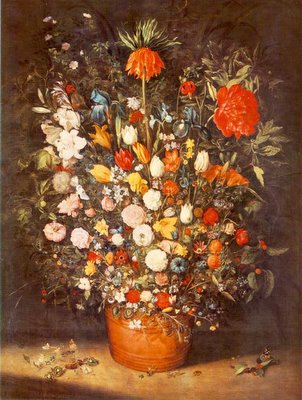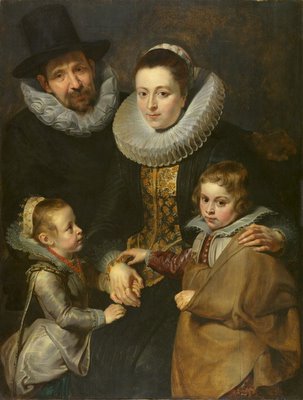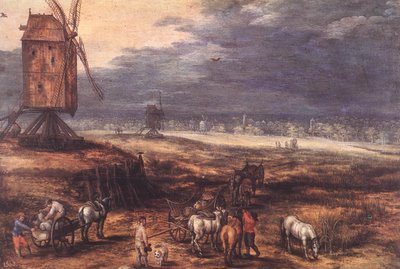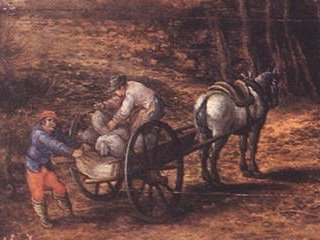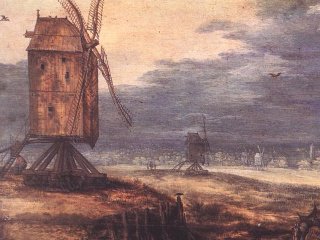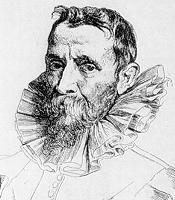
Jan Brueghel the Elder (1568-1625)
Jan Brueghel was born in 1568 in Brussels, Belgium, the son of famous Flemish painter Pieter Brueghel the Elder. Although he was born to a famous artist, his father died when Jan was very young, and so he didn't receive any training in painting from his father. He went to school in Antwerp, Belgium, where he studied under Pieter Goctkind and Gillis van Coninxloo (who was famous for his forest landscapes). He also studied watercolor painting from his grandmother in Italy.
Jan's painting style developed very independently. He began to use softer shading between objects in his paintings, and brighter hues. It is thought by some that his unique take on high-intensity hues came from his background in watercolor painting. His paintings also took on a "velvet" sheen. He used these techniques to create soft contrasts between inanimate objects and active life. He soon became well-known, and was nick-named "Velvet" Brueghel for both his painting style and his love of velvet clothing. Although his painting style had developed to become very different from his teachers', Jan still painted primarily landscapes in his early years.
As Jan matured as an artist, he began to pursue his unique style further. He expanded into more varying styles of landscapes and townscapes. He introduced characters into landscapes, going against the influence of Gillis van Coninxloo, who had popularized landscapes without people. Most of his surviving paintings are these landscapes and townscapes. He also painted religious art depicting the Garden of Eden, along with other glowing biblical scenes. His "velvet sheen" style made these subjects come to life in a colorful glow that contrasted greatly with the artwork of his peers. It is from these subjects that he was given another nick-name: "Paradise" Brueghel.
Toward the end of his career, Jan mostly painted still life. He is particularly known for his flower paintings. He gained his last and final nick-name, "Flower" Brueghel, from these paintings. At the time, new varieties of flowers were being introduced into Europe, and these new flowers were a rising fad. Jan used precise arrangements and hues of his bouquets that gave them a glowing, perfect quality reminiscent of his paintings of the Garden of Eden and Paradise. Jan's flower paintings were such a success among the upper class and among other artists that he solidified his reputation as being as talented as his father. It can be said that Jan's painting style was much more influential, though, as he popularized still life and pioneered the use of high-intensity hues to illustrate an abundance of life in his subject.
Jan fell over one day and died of cholera. It was very tragic. His two sons carried on his painting style, but they didn't innovate the style any further. Today we remember Jan Brueghel the Elder for his new way of portraying vitality and perfection through his use of soft, high-intensity hues, and for his love of velvet clothing.
